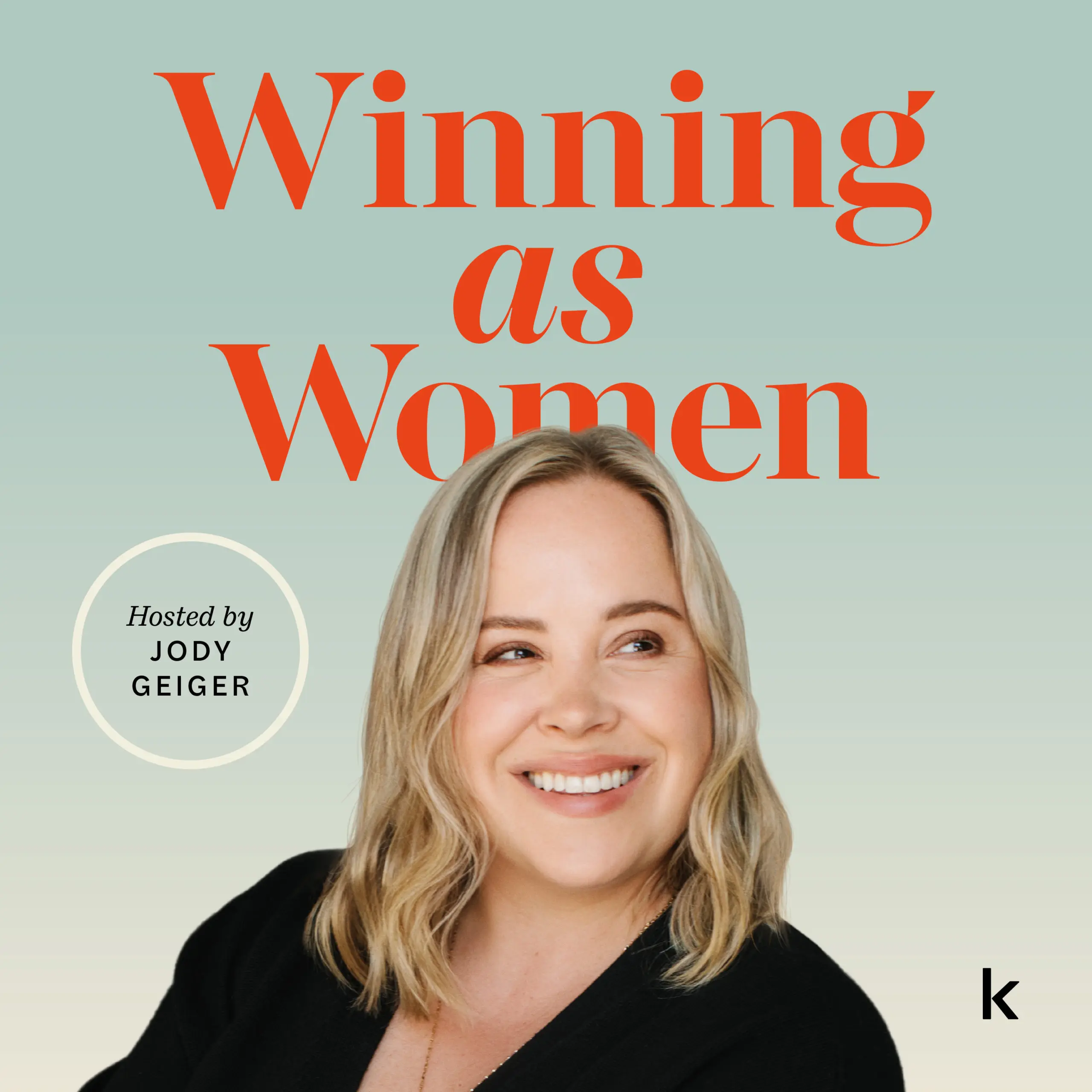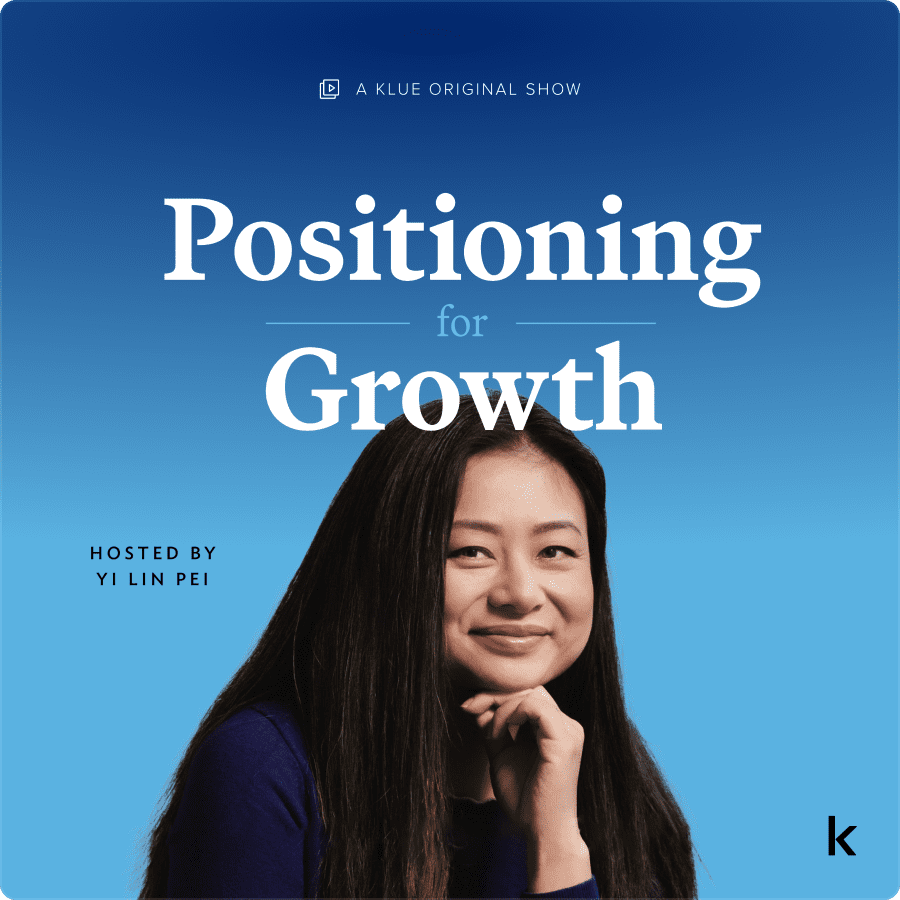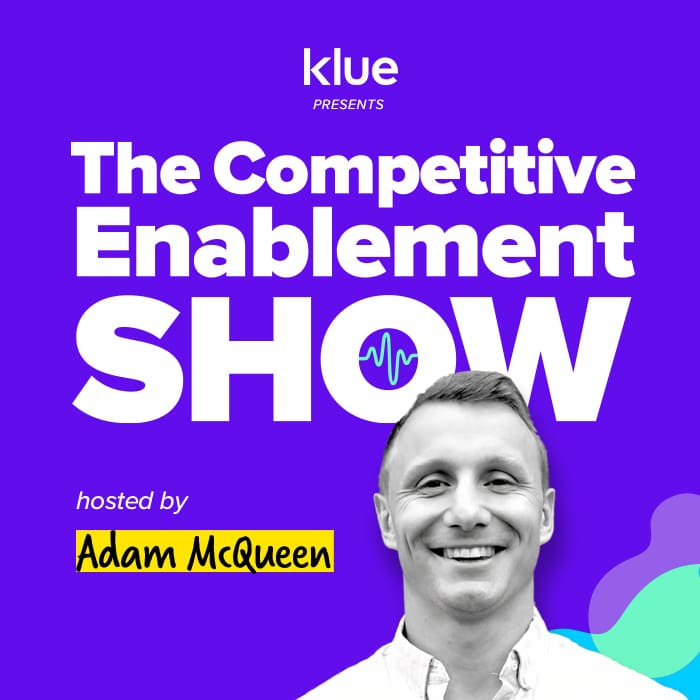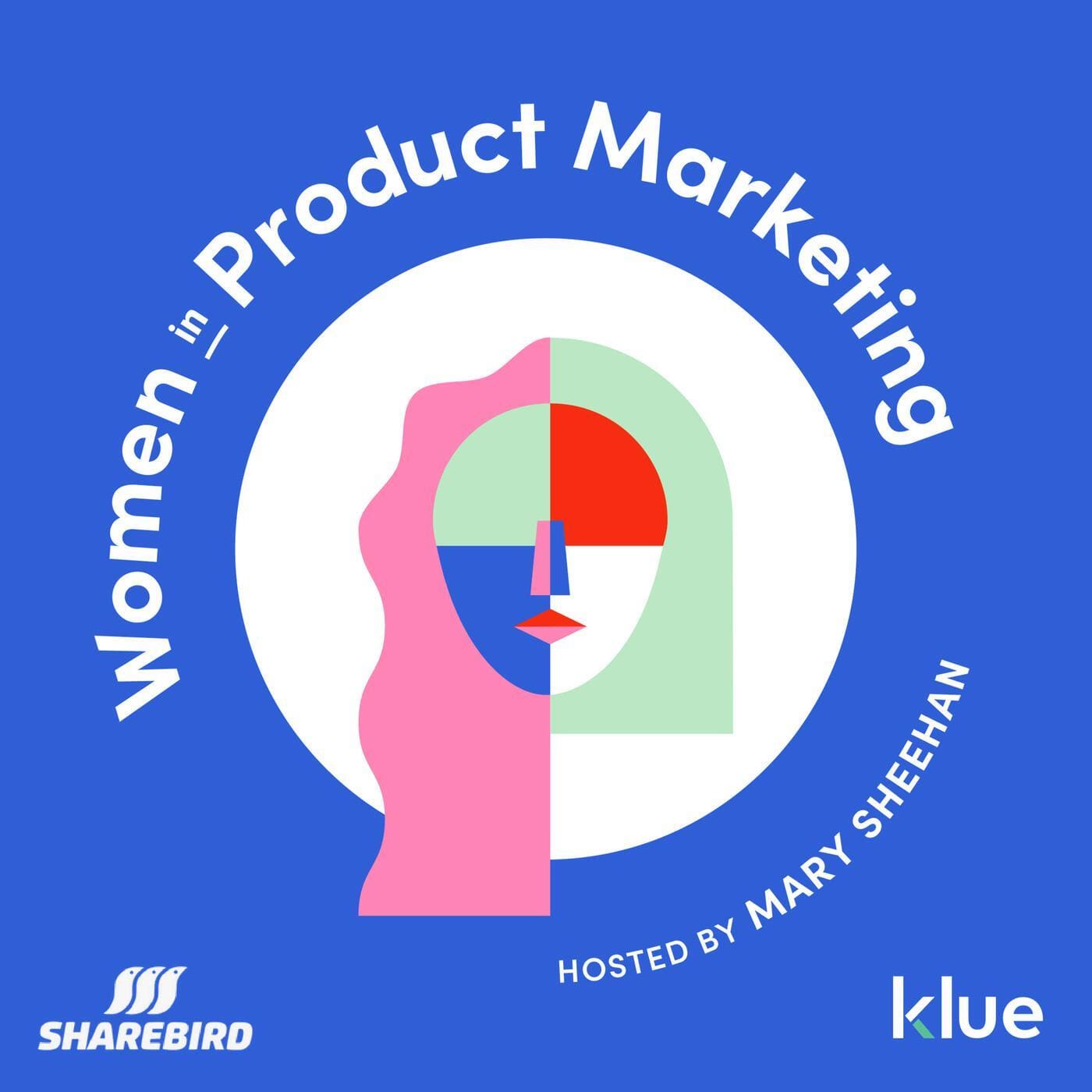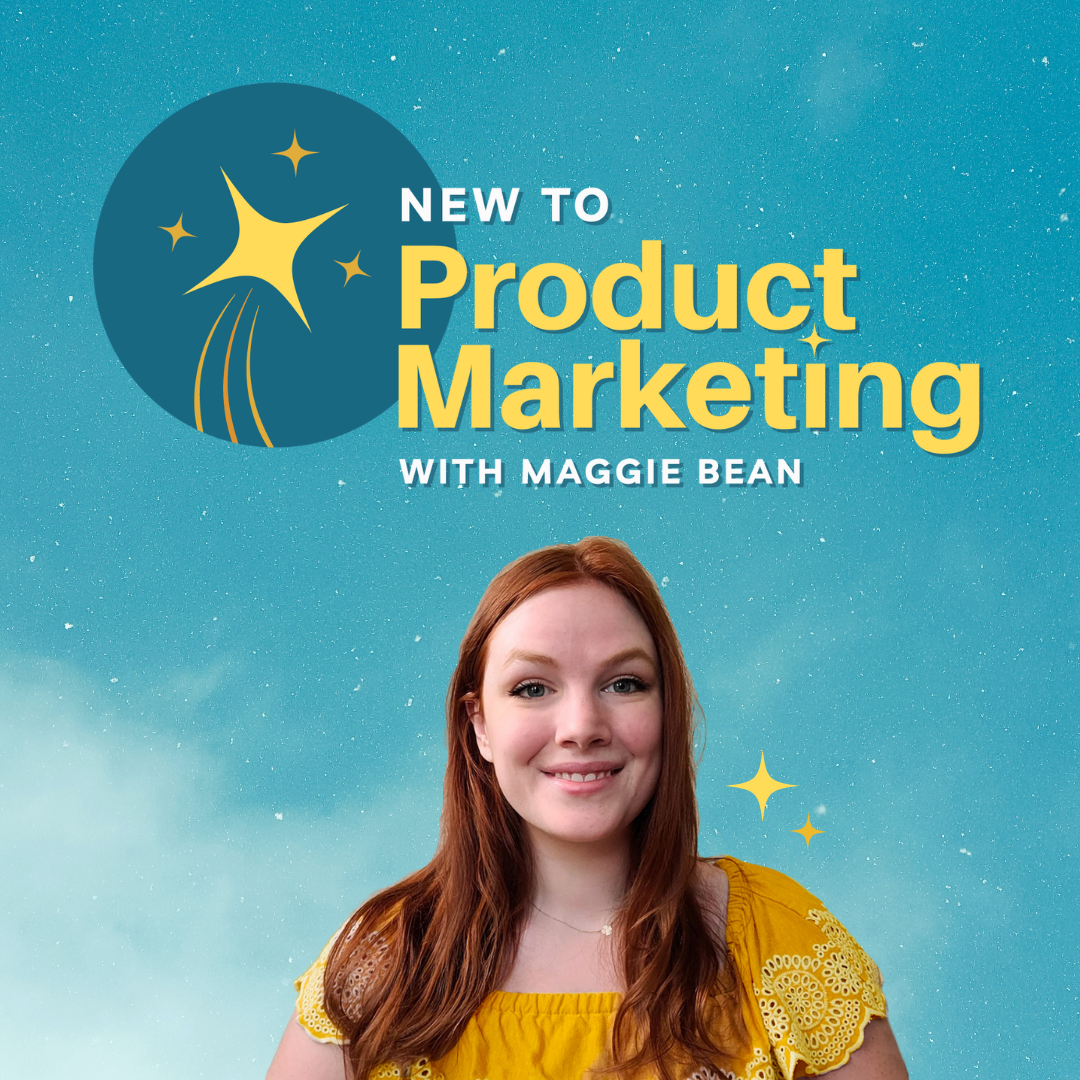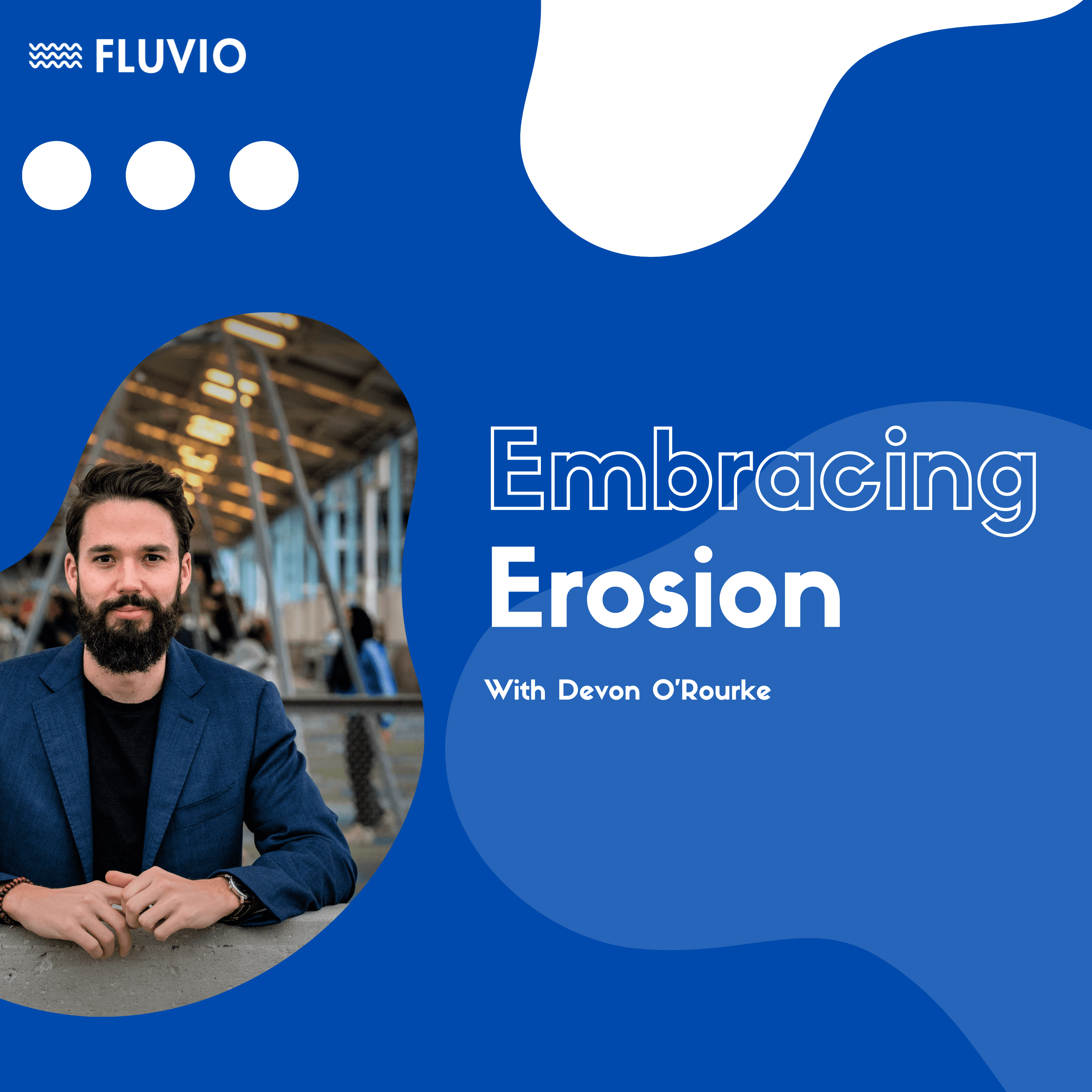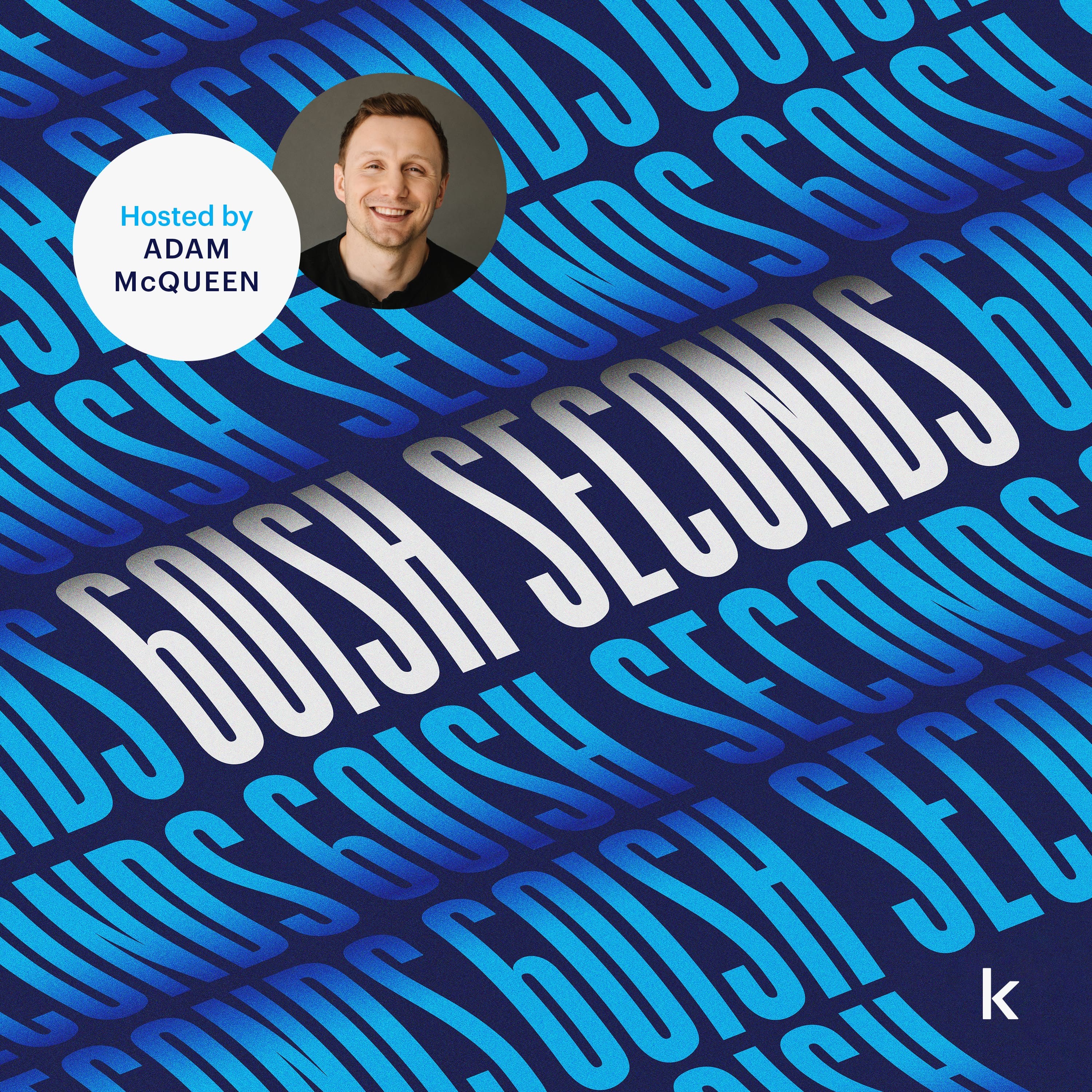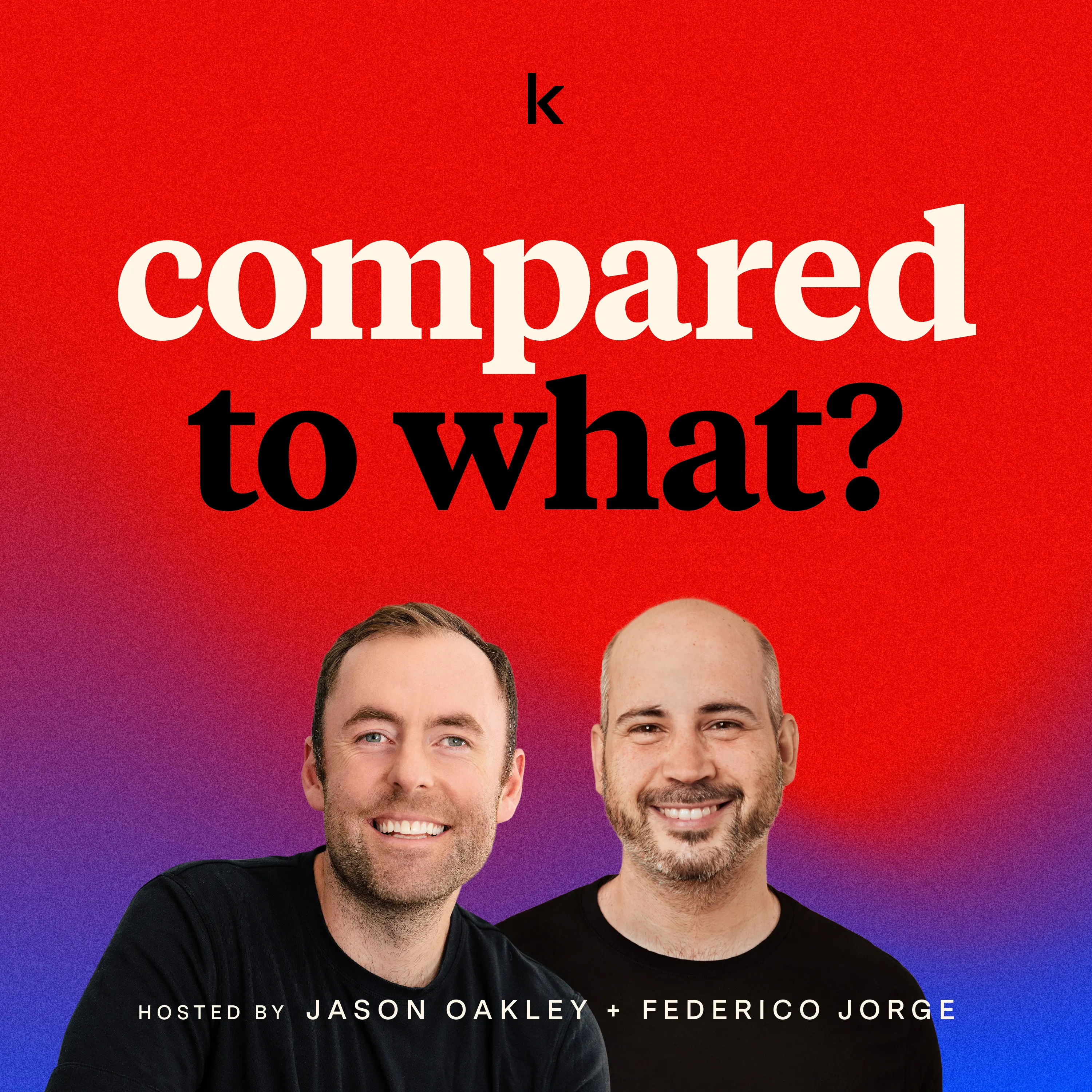Live(ish) from SCIP IntelliCon 2022 | Part II
The Transcript
Adam McQueen, Content Lead at Klue:
Kicking this thing off with a bang. Day two. I’m joined by Cam Mackey, the executive director of SCIP, the man who is making the magic happen here at SCIP. What’s being what’s been the overall feeling?
Cam Mackey, Executive Director at SCIP:
The response has been dynamite. But, you know, it’s you get this chemistry and this energy when you’re face to face. Right. You know, I think we all needed it. We’re thriving on it.
People are talking, you know, we’ve done a couple of social events at them and just it’s just seeing people smiling and laughing. It’s been great.
So, you know, not even getting into what people are learning, but just bringing a community together. That’s what it’s all about.
Adam:
If you were to lead your own session at SCIP, what would it be?
Cam:
My background, I’m a non-profit guy, but you know, prior to joining SCIP in 2019, I spent about two decades working with leadership and manufacturing companies.
And, you know, I loved it because, you know, leadership, they don’t care if you call it market intelligence sales enablement, CI, you know, that doesn’t make a difference. It’s what’s the outcome for the business.
And so I think, yeah, if I, if I wanted to do a session, it would probably be a fireside chat with a CEO or, you know, someone really, really heavy hitter thinking about what do they need from an intelligence perspective, what do they need in order to really get their attention? And how are we missing the mark right now as high professionals?
We do a lot of good, but, man, we got some bad habits. And so I think having a dialogue with senior leadership in a candid no BS way, I think, and hopefully give some good ideas for CI professionals and you know, any type of insights professional on how we can level up.
Adam:
How do you think CI pros are missing the mark right now?
Cam:
So piece number one, I’m not sure that companies are doing the best job staffing the functions. You know, we see a lot of organizations where they’ll, you know, put someone in a CI position or a compete position and they don’t have any background in it. And sometimes they’re not even getting much support.
And so, you know, there are great providers out there, you know, SCIPs one of them to do training and, you know, help build peer networks. But I think, you know, the first thing management probably needs to be a little more intentional and thoughtful about how we’re staffing and also how we’re resourcing these functions.
We see a big investment increase in all types of competitive enablement and CI, which is great. It’s there’s still a lot of confusion out in the marketplace about, okay, what’s my what should my mix be between inside talent, outsourced services, tech, etc.?
So, you know, I think leadership and companies need to help CI. I think through that, I think finally from you know, what can CI professionals do just be curious, right? You know, you even have a lot of members and you guys probably have a lot of clients. Ci Or compete it’s not full-time for them, right? It might be something they’re a product marketer they do on the side.
So I think you know, the key recommendation there, be curious, right? You know, recognize that you probably don’t know much. That’s cool. Find someone who does, you know, join a network, attend conferences, whatever it is, you know, read white papers. There’s a lot of great info out there if you’re just curious and tap into the great resources available.
Adam:
I’m joined by Dustin Ray, the Director of Competitive Intelligence at Datto. What have been some of the biggest takeaways from some of the sessions so far?
Dustin Ray:
I’ve been coming to SCIP for quite a few years now. I found a lot of the sessions to be very powerful and very insightful. So we started here on Monday. I went to a couple of great classes that were on like win-loss and it was very interesting to see how from across the intelligence base here of how to best organize, how to do that.
And then also I attended a seminar yesterday too that was more on you got to how to prepare and how you as a as an intelligence professional half of us is how do we elicit information? What are some of the best practices? It was very insightful.
I never I’ve just always said, okay, here’s what I want answered and just jumped into the conversation where there was a whole different plan, like put together a whole plan of how you’re going to get to it and then also take into account psychology and how to work with people so you can validate information but also dig deeper. So very insightful.
And then two is there’s been a couple of examples of different groups. Salesforce did one of how they’ve kicked off and how they’ve grown their CI capabilities. And then there was one yesterday where she went over a lot of how they were in the strategy and it was the market intel side and how they impacted the business and where they sat in the business.
So I learned a lot about, hey, there’s different ways of how we need to sit and work with different people in the business based off on what their responsibilities are. And we got to understand where we sit as a team. So very it’s been very good to learn that here.
Adam:
Okay. So if you’ve been a couple of times to IntelliCon now if you were to lead a session next year, Cam calls you up, what would you lead a session on?
Dustin:
One would be based on, okay, if you fall underneath sales, where’s the best place to work? Or the next would actually be? How do you deal with where you lie in the business and how do you address those KPIs and grow from there? Right.
Because I think and even in the Salesforce one today, it made they made a lot of sense, hey, look, you have to make sure you’re meeting the goals of where you report into, but also you have to be able to establish those paths to Intel. So what is the front end of the business to collect it. So I think there could be a great series next year, but they should focus on that, right?
Rather than, hey, how do we get more from the business instead of how do we better fill those KPIs and how do we better create those intel connections and networks with the front end of the business?
Adam:
I’m joined by Pierre Hiller, the senior director of Competitive Intelligence at Veeam Software. Have you seen a noticeable, noticeable shift over the past few years about how competitive experts are operating or the world they’re living in?
Pierre Hiller, Senior Director of Competitive Intelligence at Veeam Software:
Well, I have only nine years. I still feel like I’m young in it, you know, to be honest. But yeah, even in the last nine years, there has been an acceleration in the shift. And there is two big things, two big dimensions that have changed in my experience. The first one is, of course, like the tools, like when I started literally we started using like wikis or SharePoint and Excel and stuff like that.
And over the last nine years, there has been an explosion of the CI vendors like, you know, Klue or Crayon stuff, stuff like that. That really makes our life easier, I guess, you know because it’s like out-of-the-box platforms that we can use. So I think that’s the first one I’ve seen that when you start now, this specialist makes your life way easier because you don’t have to custom build the platform or manage it yourself. It’s really light touch.
So I think we have tools for everything, you know, that outsourcing and that is, is distribution promotion. So that’s the first thing that is really nice for us. So that’s the first one. The second one I would say just the amount of data, the fraction. I think that probably something that changed over the last nine years, but probably the last 15 years, maybe nowadays we have so much data available that it’s a nice thing because at least you don’t feel like you don’t have access to anything, but at the same time, you’re...
Adam:
Not drowning too much.
Pierre:
Exactly. So that’s why, again, I come back to the tools and the processes. You have to have the right tools to filter it out and you have to have the right processes to know what to look for and the right mindset, critical mindset to do the analysis yourself.
So the amount of data and also yeah, you’re right, it’s not only good data out there now, a lot of like.
Because some of the time might be just, you know, an opinion, like very opinionated, like not reflecting the factual things. So might just be bluntly wrong or bluntly, you know, misleading. You have to figure out what the noise that you can forget about and what you have to focus on.
The other one to tell you that is a really exciting one for us and I think it’s just like shifted over last five years. And it’s going to be interesting to see how it’s going to evolve over the next ten years is maybe five, ten years ago, you know, the execs, the company did not really understand the value of CI very well. So it was like kind of it was a cost center.
It was like, yeah, it’s nice to do if you can afford it. But nowadays people really start to understand the tactical mid-range and the strategic impact that CI can have on the company and every department within the company, the top execs, VIPs and even the sales on the field, they consider you more when you’re a person.
They come back, they come to you more often for your expertise. So they yeah, we’ve built I think that that reputation and we’ve proven the impact overall as a function that. Yeah. Now we’re getting more seats at the table. Yeah. Exactly. Sit at the table with the execs or the decision-makers.
Adam:
I’m joined by Justin Topliff, head of Compete at Highspot, friend of the show.
One of the conversations that have happened over the last two or three days and it’s like it sounds like it’s the toughest nut to crack and compete or maybe it’s not, in your opinion, but this idea of proving the impact on revenue, how do you prove your output? And I’ve heard a lot of different answers from different folks.
And honestly, it’s been a question that’s come up like water cooler conversation a ton. So what’s your approach right now in terms of improving your impact on revenue as a compete organization?
Justin Topliff, Senior Product Marketing Manager at Highspot
Yeah, the first thing I’ll say is I think you have to and just with any business program, right, no matter where you live in the business, you need to be able to point to the results that you’re delivering to the business. And I think compete is a big hot button. It’s something that happens naturally in every company, regardless of industry size, and market maturity.
There are competitors in your deals and ideally, you want to win all of the deals you know, that you’re selling into. So, starting with that in mind is paramount, and I think it is difficult to quantify unless you have enough activities up and running and some tooling in place that lets you measure different things. So stuff that we pay attention to at Highspot is competitive win rate. In addition to the overall win rate, that includes no-decision.
We split out we take the no decision out of the picture and we take a look at the deals that are competitive, and how we’re trending there. We look at that in a variety of ways, across different market segments, across different industries or customer types, whatever your business may have. And we set a minimum that we want to try and meet a threshold every year for us, that’s as high as 70% in some verticals or market segments. You can also look at that as an improvement over time or year over year.
So competitive win rate is something that I think should all of us are hopefully already paying attention to. Another thing that we track is the number of competitive displacements. So how many customers have we stolen from our main competitors over the years? That’s another great way to demonstrate success.
There are usage components and consumption components that get really easy to measure around things like competitive sales play that you may develop. For us, those living in Highspot, and thanks to our scorecard technology, we’re able to see what consumption is looking like, and what content is being shared. We can actually attribute a lot of that to closed one revenue. So I can point to revenue numbers associated with different pieces of my content.
There’s also involvement in deals. So if you’re using a CRM, you can probably add a checkbox or a field whenever you’re tagged in to a deal by your sales reps and you can measure it that way. You can say, I influenced $10 Million in ARR over the past year, and that’s a great way to look at that as well. Win-loss is another great way to quantify your impact and that’s really useful because of so many other areas of the business benefit from that intelligence. So we’ve set up automation there as well. And over the past year, we’ve gathered over 300 feedback profiles from our buyers.
And that makes it really easy to hear a lot of things from those buyers, right? They’ll tell you what you did right, what you did wrong and what they really enjoyed about your sales cycle. Oftentimes they point to content pieces that you made as a compete person or compete team. And those anecdotes, the qualitative feedback as well, helps you paint the picture of an overall return on all of these different activities.
Adam:
I am joined by Zavo Gabriel, the senior manager of Competitive Intelligence at Culture AMP. You said you got into Compete 2019, Is there something now that you wish you could tell yourself then when you started getting into Compete before you’d start?
Zavo Gabriel, Senior Manager of Competitive Intelligence at Culture Amp:
Trust your instincts and don’t be afraid to jump in with both feet. I spent I think I spent a lot of time second-guessing myself and because I was new to this field that I was learning how to fly while I was building the plane while I was falling off the cliff. Yeah.
There were a lot of times when I was when I was second guessing myself, when I wasn’t I wasn’t really sure that what I was doing was right. Being less afraid to sort of put my foot down and say, no, this is what we need to do. This is the way we need to do it.
Adam:
Have there been any highlights from any sessions in terms of I mean, we’ve had countless amounts of people that are some of the best minds and compete like decades of experience. And there’s been plenty of tactical, strategic lessons so far. Has anything stood out to you on that side?
Zavo,
So I just came from a session that your product marketing lead man moderated with Salesforce, the team at Salesforce. And it was really interesting how much overlap there was between the way I’ve been thinking about setting up a CI function at Culture AMP and the kinds of stakeholders that matter and the kind of reputation that you have to build as a CI function that like the sort of trusted truth-teller, not just throwing materials over the wall, but really getting a seat at the table and being part of the conversation where it’s not just that people are consuming what you write, it’s that they care what you think, you know. And this was the VP and the director.
This was a, you know, member of a CI team at an 80,000-person company. And here I am. You know, I am one person on the product marketing team who owns Competitive Intelligence for Culture AMP. And it’s the same, it’s the same attitude.
And that was really great to hear it really reassuring because those are the bits that matter no matter what scale you’re at, you know, and whether I’m, whether I’m a department of one or whether in some future state I have a team. And, you know, as the company continues to grow or whatever, this is the fact that I’ve been thinking about that in shows that, okay, I’m on the right track with this. This is good.
Adam:
I am joined by my friend Dan Hamilton. He’s the VP of Competitive Intelligence at this up-and-coming startup. You may have heard of: Salesforce.
What the hell do compete professionals need to stop doing?
Dan Hamilton, VP Competitive Intelligence at Salesforce:
Oh, boy. It’s going to be the longest podcast you’ve ever done. A pattern I see too often. And like B2B tech is you get stuck in this lane where, yes, I am the team that builds battle cards and content and I just do stuff for people versus like really feeling comfortable and confident and credible enough to say, actually, this is what I think we should do.
That’s a hard place to get to. And it’s kind of comfortable, right, to write battle cards. It feels good. I’m doing stuff, whatever. People are happy. They love this content, you know, to me that’s a path to just burn out mediocre work. Like you’re never going to actually advance what you’re trying to do in CI if you get stuck in that lane. So I just it’s, it’s, it’s a pain point for me. I
I think the only other thing that I would say is I think too often CI firms and especially organizations think that the best way to beat the competition is just to have the right message. As long as we can put this string of words together on this page, we’re going to win every time. Right. And it’s just not it might that might be true early on, right? Where you have this crazy differentiation and the gap between you and the incumbent is huge. But that evaporates really quickly.
Adam:
And what’s the answer then? In contrast, if it’s not just messaging, what really matters, then?
Dan:
So I think one thing I think a lot about, I think this was in a book called High Output Management by this guy, Andy Grove. It’s this amazing book on like leadership and management. And one of the things that really stuck with me from that was he has this principle called leverage, right? Which is what is the 5% of activities that I can spend all of my time on that’s going to deliver the most impact.
So for me, like at Salesforce, we think a lot about like the business context, the competitive context. And like what we realize is if we can convince the company to make this change to our product roadmap or enter this new market or whatever, fix this part of the organization that’s not functioning properly, that actually can have a force multiplier effect where I can actually influence hundreds of millions of dollars versus, hey, let me make sure all my sales reps see the battle card, which maybe I’ll incrementally affect a deal here or there.
So, you know, it’s difficult, though, because what you’re saying with the battle card is a deliverable. It’s also like a checkbox, but is it deliverable? And it’s like, oh, I’ve completed a task. Where is what you’re talking about? There is it’s not a risk, but it’s not necessarily something that’s concrete that you have to do. It’s like you almost have to pave your way. You have to find a way. Yeah. To influence and make a decision that might not be right in front of you. Right. Battle card to fill out.
Adam:
And that work still needs to be done right?
Dan:
Oh, I mean, that is foundational, right? Because that’s the other thing that I said in the session was like, if you’re going to start a CI team, especially in B2B, anything, you’re going to start with sales, right? That’s your first audience. They’re going to love you.
You can actually connect the work that you do to tangible business outcomes very quickly. Right. But, you know, to me, it’s just like, how do you move beyond that? Right. How do you actually see the big picture? Because the reality is, like I mean, we’ve gone down this path in the past.
You know, you could spend six months building out a new competitive messaging program framework thing, whatever. And that’s cool, right? And you know, marketing is going to love it. And yeah, there are going to be some deals that you win because of that.
I would rather spend the six months, though, understanding the fundamental nature of the competition and almost changing the playing field. Right. That’s that to me is where you actually drive the most impact. And I don’t think a lot of CI teams really move in that direction.




Stay up to date with the latest from The Compete Network
Be the first to know about the newest episodes dropping on the Compete Network, upcoming shows with creators, and community events where you can learn from top leaders.
JOIN NOWNEWSLETTER

Never miss a new release on the network.
(Your competitors sure aren’t.)
Be the first to know about:
- The latest episodes dropping on the Compete Network
- Community sessions & events
- Upcoming exclusive shows

